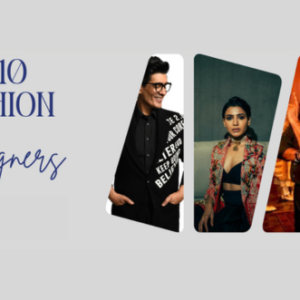Fashion is more than just clothing; it is an art, a statement, and a billion-dollar industry that continues to evolve. The world’s best fashion designers have not only shaped trends but have also built thriving businesses that stand the test of time. If you aspire to be a fashion entrepreneur or understand the business side of fashion, this article will explore key elements of a successful fashion business, taking inspiration from the industry’s top designers.
The Role of a Fashion Designer in Business
A great fashion designer possesses more than just creativity; they need an entrepreneurial mindset, strategic thinking, and an understanding of market demands. The ability to transform a vision into a brand requires knowledge of design, production, marketing, and business management. Successful designers such as Giorgio Armani, Coco Chanel, and Ralph Lauren have all mastered the balance between artistic expression and business acumen.

Building a Strong Fashion Brand
A successful fashion business begins with a strong brand identity. This involves:
- Defining a Unique Aesthetic – Establishing a signature style that differentiates the brand from competitors.
- Creating a Memorable Logo and Name – Recognizable branding helps in building a lasting impression.
- Consistent Messaging – The brand’s voice, storytelling, and values should be consistent across all platforms.
- Target Audience Clarity – Understanding the consumer base, including their preferences, lifestyle, and purchasing behavior.
Product Development and Quality Control
High-quality materials and craftsmanship are essential for a designer’s credibility and longevity in the industry. Many top designers, including Tom Ford and Alexander McQueen, have built reputations based on their attention to detail and innovative designs.
- Material Sourcing: Ethical and sustainable sourcing is becoming increasingly important in the fashion industry.
- Production Process: Whether choosing in-house production or outsourcing, maintaining strict quality control ensures customer satisfaction.
- Innovation: Fashion thrives on creativity and innovation. Designers who continuously push boundaries stay relevant.
Marketing Strategies for Fashion Designers
Marketing plays a crucial role in the success of a fashion business. Some effective strategies include:
- Social Media Presence: Platforms like Instagram, TikTok, and Pinterest are powerful tools for showcasing collections and engaging with audiences.
- Influencer Collaborations: Partnering with fashion influencers and celebrities can boost brand credibility and visibility.
- Runway Shows and Pop-Up Events: Showcasing collections through exclusive events creates buzz and excitement.
- E-commerce and Online Stores: A strong digital presence through a user-friendly website and online store is vital in today’s market.
- Traditional Advertising: Magazines, television, and billboards remain effective for luxury fashion brands.
Financial Planning and Business Sustainability
Managing finances effectively is key to sustaining a fashion business. Important aspects include:
- Budgeting and Cost Management: Tracking expenses and optimizing costs ensure profitability.
- Investment in Technology: Utilizing software for inventory management, customer insights, and marketing automation enhances efficiency.
- Diverse Revenue Streams: Expanding product lines, licensing deals, and collaborations can generate additional income.
- Sustainability Practices: Ethical production, eco-friendly materials, and fair trade practices appeal to modern consumers and contribute to long-term brand success.
Lessons from Top Fashion Designers
Many fashion designers have built empires that inspire upcoming entrepreneurs. Here are a few key lessons:
- Coco Chanel: Simplicity and timeless elegance create lasting impact.
- Ralph Lauren: Expanding beyond fashion into lifestyle branding can elevate a business.
- Virgil Abloh: Innovation, streetwear influence, and cultural relevance drive engagement.
- Donatella Versace: Embracing boldness and distinctiveness can carve out a niche in a competitive market.
Final Thoughts
Becoming a successful fashion designer requires creativity, business savvy, and resilience. Whether launching a startup or scaling an existing brand, understanding market trends, consumer needs, and effective marketing strategies can set a designer apart. The best fashion designers are not just artists; they are visionaries and entrepreneurs who understand the delicate balance between creativity and commerce. By adopting these strategies, you can build a thriving fashion business that stands the test of time.












